The washing machine tears clothes - causes and repairs
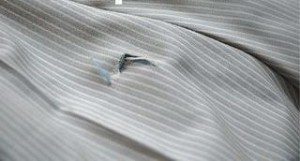 An automatic washing machine is an essential attribute of a modern home. Most people simply cannot imagine their life without a “home assistant”; she washes, rinses, spins, and in some cases even dries clothes, giving us the opportunity to go about our business. But what should you do if the washing machine, instead of taking care of your laundry, tears things up? What is the reason for such disgrace, let's figure it out together.
An automatic washing machine is an essential attribute of a modern home. Most people simply cannot imagine their life without a “home assistant”; she washes, rinses, spins, and in some cases even dries clothes, giving us the opportunity to go about our business. But what should you do if the washing machine, instead of taking care of your laundry, tears things up? What is the reason for such disgrace, let's figure it out together.
Causes of malfunction
A machine from any manufacturer, any model should treat laundry with relative care and certainly should not openly tear it during washing. If this happens, then there is a problem that needs to be fixed. Where to begin? As always when dealing with malfunctions, you need to start by identifying the causes of the breakdown. In this case, the reasons are as follows.
- Things in the drum tear each other if they have zippers, buttons, bones or other sharp parts.
- There are hardly noticeable damages on the inner surface of the drum of a machine with horizontal loading of clothes, which cause puffs on the laundry or tear it.
- On the inner surface of the hatch of a top-loading washing machine there are protruding elements that tear laundry (springs, sharp chips of plastic, etc.).
- The laundry is torn due to the displacement of the washing machine drum.
- Linen is torn due to too aggressive washing mode, which is not suitable for delicate fabrics.
Note! Also, the washing machine tears clothes if the user adds too aggressive detergents for washing.The chemical weakens the fabric, and the machine “finishes” it.
Things tear small hard objects
Any good housewife knows that before putting laundry into the washing machine, it is necessary to make sure that all metal and other sharp parts of things are hidden. The easiest way to do this is to turn such things inside out, but there are times when this cannot be done. If you cannot turn the item inside out, then you need to place it in a washing bag, otherwise even the most harmless element at first glance (button, rhinestone, dog, zipper) can cause serious damage to other things.
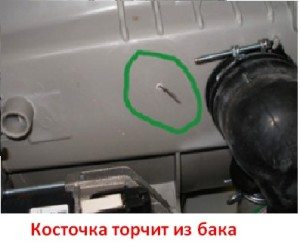 In addition, you need to carefully check your pockets and take out all items from there, even small debris, such as seed husks. Any self-tapping screw, paper clip or pin that accidentally gets into the drum of a washing machine during washing can make dozens of holes in the laundry. It’s even worse if these items then fall into the washing machine tub. For example, bra wire If it gets into the machine, it can easily pierce the tank, creating additional problems for you.
In addition, you need to carefully check your pockets and take out all items from there, even small debris, such as seed husks. Any self-tapping screw, paper clip or pin that accidentally gets into the drum of a washing machine during washing can make dozens of holes in the laundry. It’s even worse if these items then fall into the washing machine tub. For example, bra wire If it gets into the machine, it can easily pierce the tank, creating additional problems for you.
Small hard and sharp objects can get stuck in the washing machine for a very long time. It turns out that some screw is stuck somewhere between the cuff and the drum and tears the laundry every time you wash it. What to do in this case?
There is only one recipe - very carefully inspect the inside of the drum for the presence of foreign objects, not forgetting to inspect the space near the cuff (especially in the upper part of the hatch). You also need to listen carefully to the operation of the machine, because small objects often reveal their presence by knocking, grinding or ringing.
Drum or door surface defect
If you put a new washing machine into operation and it immediately tears up your laundry, you need to look for a manufacturing defect. In a horizontal-loading washing machine, you need to immediately check the inner surface of the drum. There's probably a metal burr or something similar there. If a visual inspection does not produce results, then use old tights. Put the tights on your hand and very carefully, centimeter by centimeter, move your hand along the inner surface of the drum.
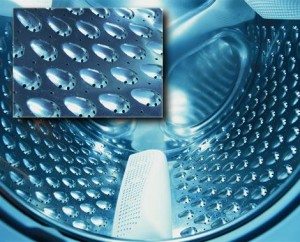 If there is an unfortunate burr on the drum, it will give itself away. How to remove burrs from a drum? If the machine is new (under warranty), then it is better to exchange it for another one or take the money. After all, where there is one manufacturing defect, there may be another, and this does not at all speak in favor of the brand of washing machines you have chosen. If the machine is old, you can remove the burr by sanding it on the inside of the drum with fine sandpaper.
If there is an unfortunate burr on the drum, it will give itself away. How to remove burrs from a drum? If the machine is new (under warranty), then it is better to exchange it for another one or take the money. After all, where there is one manufacturing defect, there may be another, and this does not at all speak in favor of the brand of washing machines you have chosen. If the machine is old, you can remove the burr by sanding it on the inside of the drum with fine sandpaper.
Important! You need to clean the burr very carefully so as not to leave unnecessary scratches on the inner surface of the drum. In addition, think about the origin of the burr; perhaps we are talking about a more serious breakdown.
In top-loading washing machines, the hatch is located on the top wall of the cabinet. On its inside there is a mechanical hatch locking device, which can break due to the sudden slamming of the lid. The plastic parts of the locking device shatter, exposing the spring and leaving sharp chips. Both the spring and chips are very dangerous for the laundry, so you need to urgently replace the broken hatch locking device. Before repairs are carried out, you cannot wash clothes - this is risky.
Inappropriate washing mode
It would not be amiss to once again remind you that you need to carefully read the instructions for the washing machine and strictly follow the provisions of these instructions. In particular, it says that each type of fabric has its own washing modes. And if the machine tears things, perhaps the reason lies precisely in the fact that you are trying to wash things made from delicate fabric on an intensive washing cycle, suitable only for coarse fabrics.
It is clear that all this sounds rather stupid, however, such a mistake is very common, despite the insistent warnings from the manufacturer, which he prints in the instructions for each washing machine. There is a simple and wise rule, If you doubt that your item will withstand washing in a washing machine, do not put it in there, wash it by hand.
Linens are torn due to broken bearings
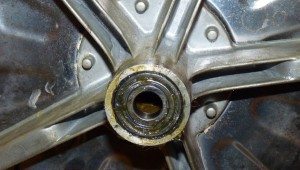 It happens that laundry gets stuck between the edges of the drum and tub during washing and breaks. The drum rotates at a fairly high speed, and if something gets between it and the tank, you will end up with a torn and chewed rag instead of your favorite shirt. Why does this happen, since the design of the machine assumes that the laundry cannot escape from the drum? The answer lies in the design features of an automatic horizontal-loading washing machine.
It happens that laundry gets stuck between the edges of the drum and tub during washing and breaks. The drum rotates at a fairly high speed, and if something gets between it and the tank, you will end up with a torn and chewed rag instead of your favorite shirt. Why does this happen, since the design of the machine assumes that the laundry cannot escape from the drum? The answer lies in the design features of an automatic horizontal-loading washing machine.
The fact is that the moving elements of the machine, or rather the drum, rotate thanks to bearings. They also ensure a perfectly horizontal position of the drum. If the bearings are destroyed, this leads to the fact that the drum begins to rotate with displacement. What does this mean? And this risks widening the gap between the edges of the tank and the rotating drum, and the cuff will no longer cover this gap.The end result is that laundry gets caught in the gap and gets spoiled, much to the displeasure of the hostess.
Important! A broken bearing is a very big problem for a washing machine; if it is not replaced in time, it will end in more than just torn clothes. This will send your “home helper” to the landfill.
To repair the bearing, you need to do the following:
- remove the top cover of the washing machine;
- disconnect the counterweight;
- remove the back wall;
- disconnect the engine and pump;
- unscrew the shock absorbers;
- remove the front wall together with the hatch cuff;
- remove the washing machine tank;
- disassemble the tank;
- remove the old bearing and install a new one.
As you can see, the process is too complicated to do it yourself, so if you are comfortable with technology, it is better to invite a specialist. But it’s clear that such a problem should under no circumstances be postponed until later!
To summarize, we note that there are quite a few reasons why the machine tears clothes, but you need to know about them in order to quickly find a solution to the problem. And certainly, if you suspect that the breakdown is serious and you can’t handle it yourself, don’t hesitate to call a specialist, don’t waste time - this can create even more problems.
Interesting:
Reader comments
- Share your opinion - leave a comment

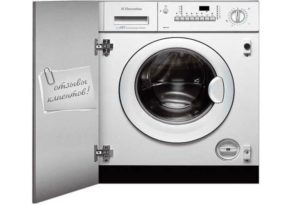
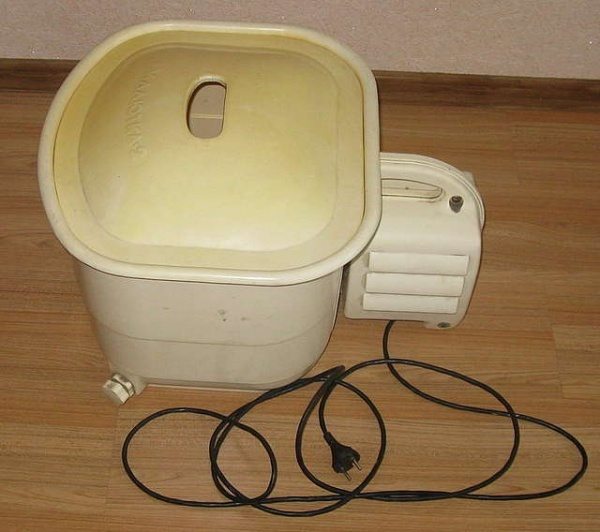



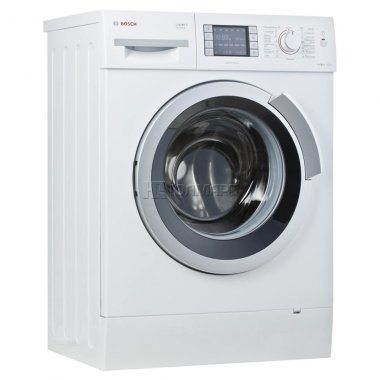














Add a comment